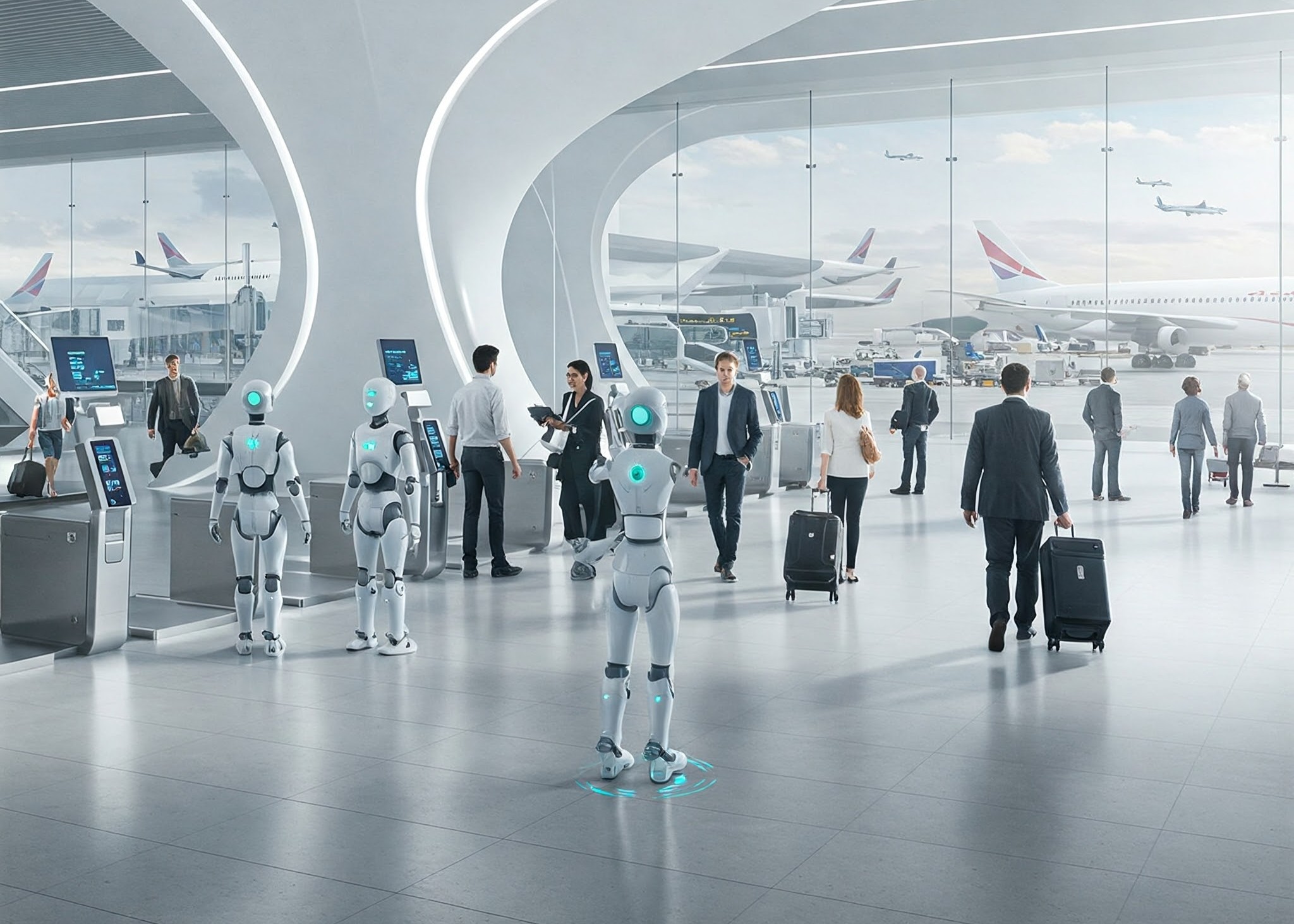GadgetWings
Airport of the future: Biometrics, bots and baggage
The airport of the future won’t look much bigger, but it will feel drastically different, writes ARTHUR GOLDSTUCK.
It’s easy to assume that airports of the future will look like bigger versions of today’s busiest hubs. But that future doesn’t exist. Not because airports won’t change, but because they can’t. The world’s airports have run out of space.
According to a new white paper from global air transport tech company SITA, global passenger traffic is expected to double by 2043. But most airports don’t have the room, political backing or funding to double in size. Instead, they must double in capability – within the same physical footprint. That reality is forcing one of the biggest digital transformations in any global industry.
“Airports already exceeded pre-pandemic passenger levels in 2024,” the report finds, citing IATA forecasts of more than 5-billion global passengers this year. The number is expected to hit 7.9-billion in 2043. The pressure is real, and the consequences of inertia are too costly to ignore.
The SITA white paper does not deliver the inevitable techno-utopian vision of flying taxis and glass-domed terminals. Rather, it is a grounded roadmap of digital tools and systems that are already working in airports across the world. And in almost every instance, the goal is the same: process more people, more smoothly, with less friction and fewer delays.
The paper paints a clear picture of a highly automated, data-driven and AI-optimised environment. It highlights a wide range of interventions – from biometric check-in to predictive maintenance – that promise to overhaul how airports manage their three biggest challenges: passenger flow, baggage handling and operational resilience.
Biometrics, unsurprisingly, are centre stage. At Beijing Capital International Airport, facial recognition now takes passengers from check-in to boarding without a single document needing to be shown. In Orlando, 240 passengers are boarded in under 10 minutes using biometric gates. Over 90% of international passengers opt in.
That may sound like a US or China phenomenon, but it is already more widespread than most South African travellers realise. The Airports Authority of India is rolling out biometric systems to 44 airports through its Digi Yatra programme. Copenhagen has off-airport biometric bag drops. Aruba lets travellers cross borders without showing a document at all. These systems are both faster and make the airport smarter. With biometric identity linked to baggage, check-in, and boarding, airports can operate with better certainty, less fraud, and fewer resource gaps. According to SITA, more than 70% of airlines and 50% of airports expect to have biometric systems in place by 2026.
Self-service plays a supporting role, especially where passenger volumes overwhelm human capacity. Touchless check-in, self-bag drop and boarding gates are not about replacing staff, however. They let existing staff focus on people who actually need help. The hope is that service improves where it matters.
What about the most abused character in this travel story: the bag? The global mishandling rate has dropped from nearly 19 bags per thousand in 2007 to under 7 today. This is largely thanks to tracking and tracing technologies, driven by automation, AI and even Apple’s Find My network. With systems like SITA’s Auto Reflight, bags that miss their flight can be rerouted automatically, without human intervention. That, again, is the hope, and it does not always match up to reality. The problem is that the complexity of an airport doesn’t stop at the terminal gates. The tarmac is alive with autonomous vehicles, predictive maintenance systems, and sensor- based scheduling platforms. Airports are turning to Mobile Resource Management to coordinate ground staff and equipment in real time. SITA says its Total Airport Optimiser pulls all these systems into one platform to make airport-wide decisions using AI.
If this all sounds like science fiction, let’s touch down briefly at Toronto Pearson Airport. It is using such systems to allocate aircraft stands dynamically and optimise performance. There, the Johannesburg experience of having to wait for the stairs to arrive feels like a scene from a different era.
Technology doesn’t fix everything. One in four airports are still not using AI at all. A third cite cybersecurity as their single biggest concern. Regulations are changing too slowly. And there remains widespread discomfort about how biometric data is stored and protected. Staff shortages persist. Many experienced employees left during the pandemic and haven’t returned. Airports now need to use automation to free up human staff for higher-value interactions. That means new workplace apps, real-time task tracking, and better integration between back-office systems and frontline work.
The endgame is not only more efficient movement through airports. It has to be a reimagining of the airport experience itself. In SITA’s vision, we’ll check in remotely, have bags collected at the hotel, and flow seamlessly from Uber to boarding gate without once showing a passport. That future may feel far away in South Africa or even most American airports, but it is already being built globally.
* Arthur Goldstuck is CEO of World Wide Worx and editor-in-chief of Gadget.co.za. Follow him on Bluesky on @art2gee.bsky.social.




















